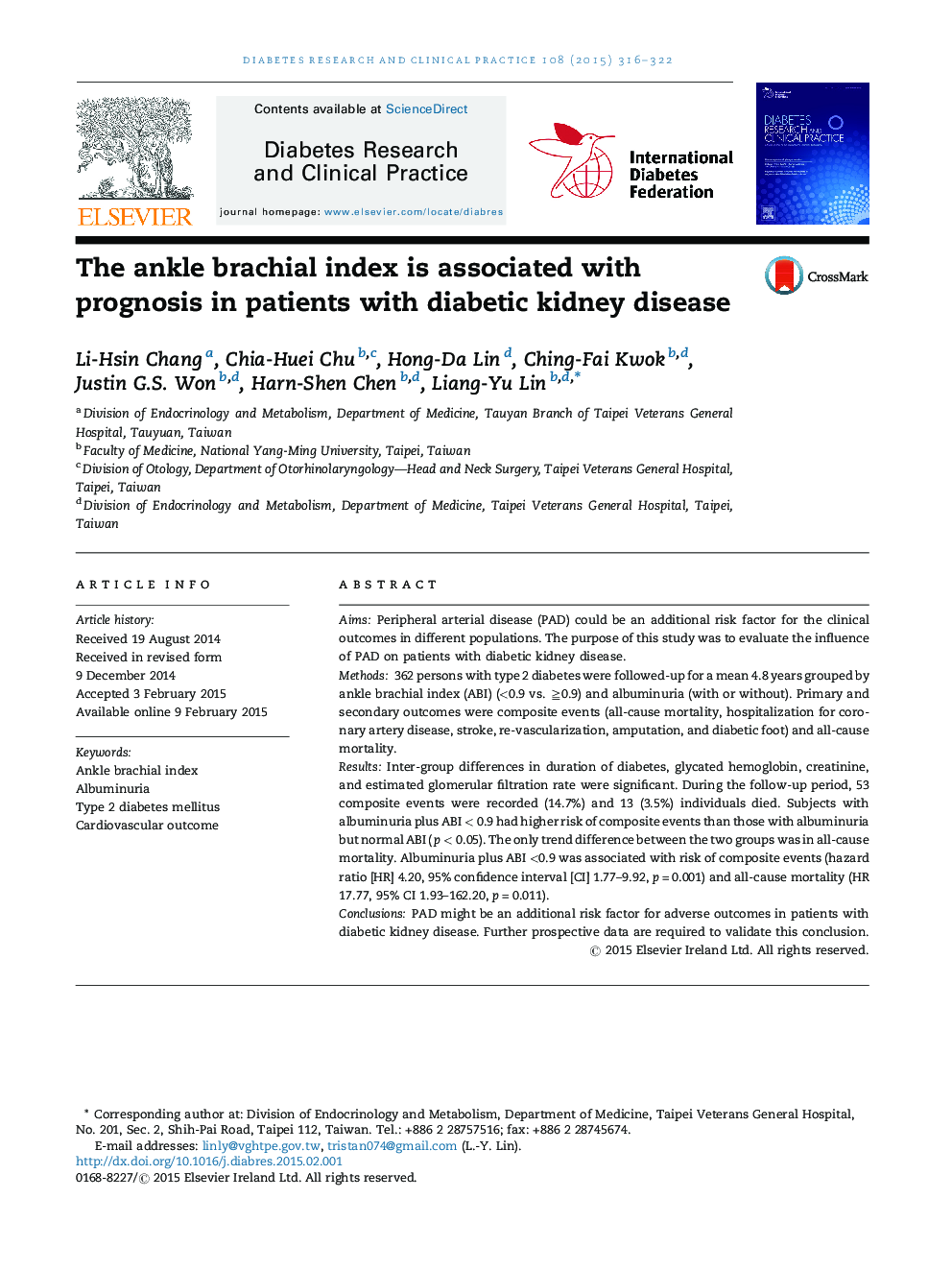| Article ID | Journal | Published Year | Pages | File Type |
|---|---|---|---|---|
| 5899482 | Diabetes Research and Clinical Practice | 2015 | 7 Pages |
â¢ABI is a CV risk factor.â¢ABI or albuminuria associates wih diabetic outcomes.â¢ABI < 0.9 plus albuminuria associats with the worst outcome.
AimsPeripheral arterial disease (PAD) could be an additional risk factor for the clinical outcomes in different populations. The purpose of this study was to evaluate the influence of PAD on patients with diabetic kidney disease.Methods362 persons with type 2 diabetes were followed-up for a mean 4.8 years grouped by ankle brachial index (ABI) (<0.9 vs. â§0.9) and albuminuria (with or without). Primary and secondary outcomes were composite events (all-cause mortality, hospitalization for coronary artery disease, stroke, re-vascularization, amputation, and diabetic foot) and all-cause mortality.ResultsInter-group differences in duration of diabetes, glycated hemoglobin, creatinine, and estimated glomerular filtration rate were significant. During the follow-up period, 53 composite events were recorded (14.7%) and 13 (3.5%) individuals died. Subjects with albuminuria plus ABI < 0.9 had higher risk of composite events than those with albuminuria but normal ABI (p < 0.05). The only trend difference between the two groups was in all-cause mortality. Albuminuria plus ABI <0.9 was associated with risk of composite events (hazard ratio [HR] 4.20, 95% confidence interval [CI] 1.77-9.92, p = 0.001) and all-cause mortality (HR 17.77, 95% CI 1.93-162.20, p = 0.011).ConclusionsPAD might be an additional risk factor for adverse outcomes in patients with diabetic kidney disease. Further prospective data are required to validate this conclusion.
